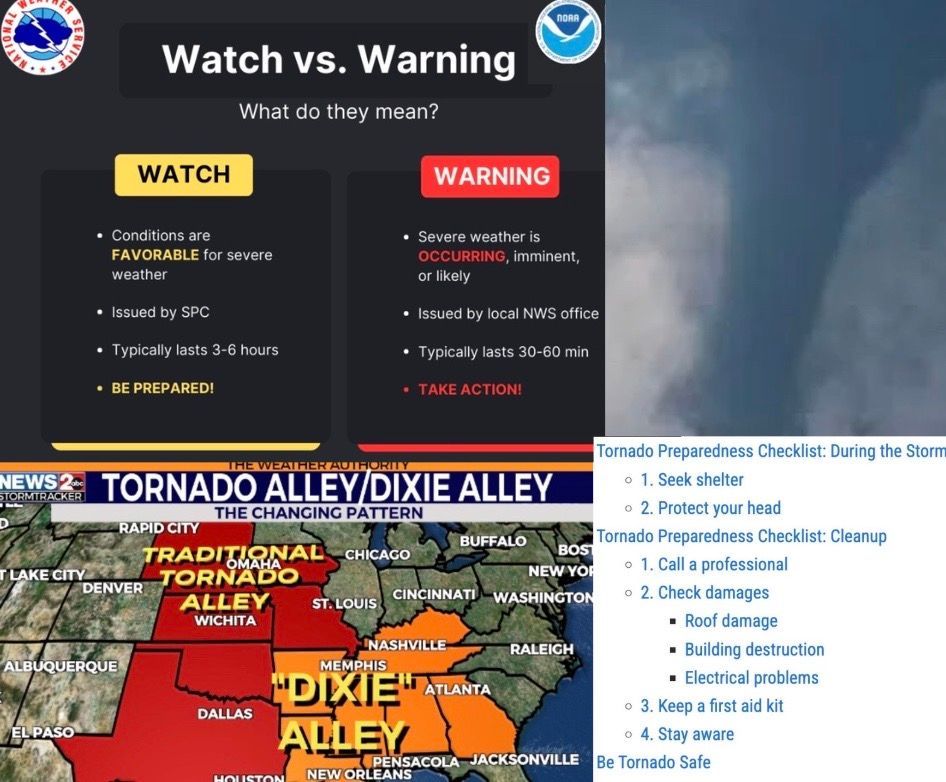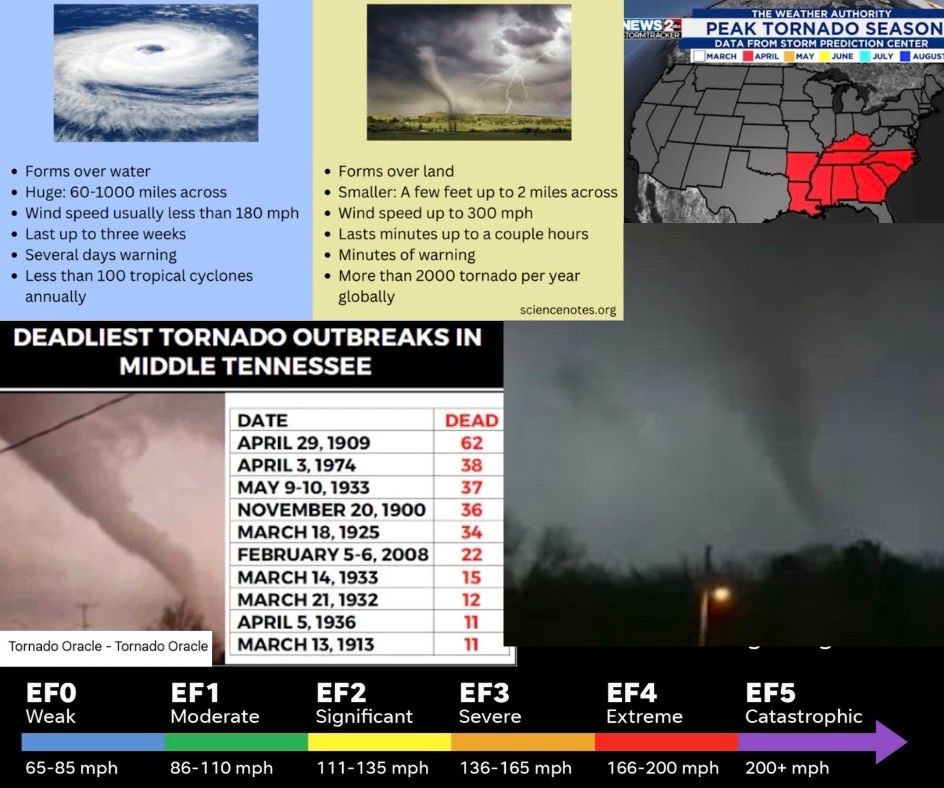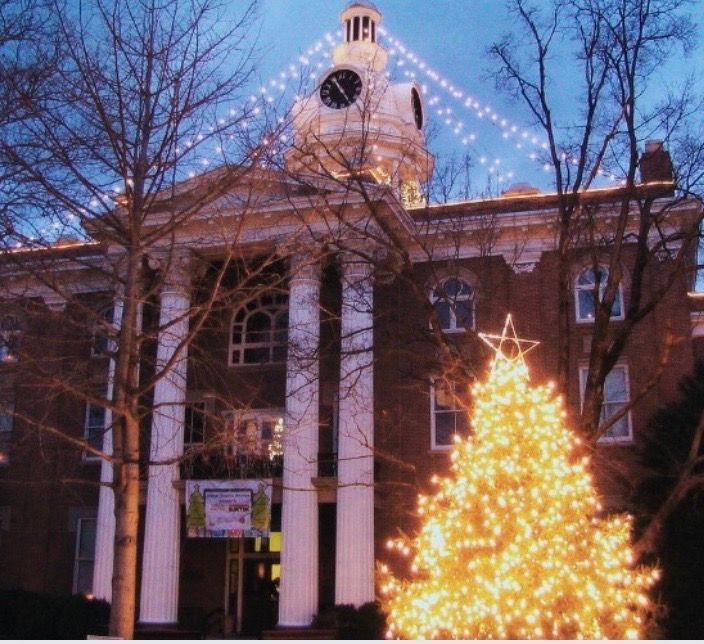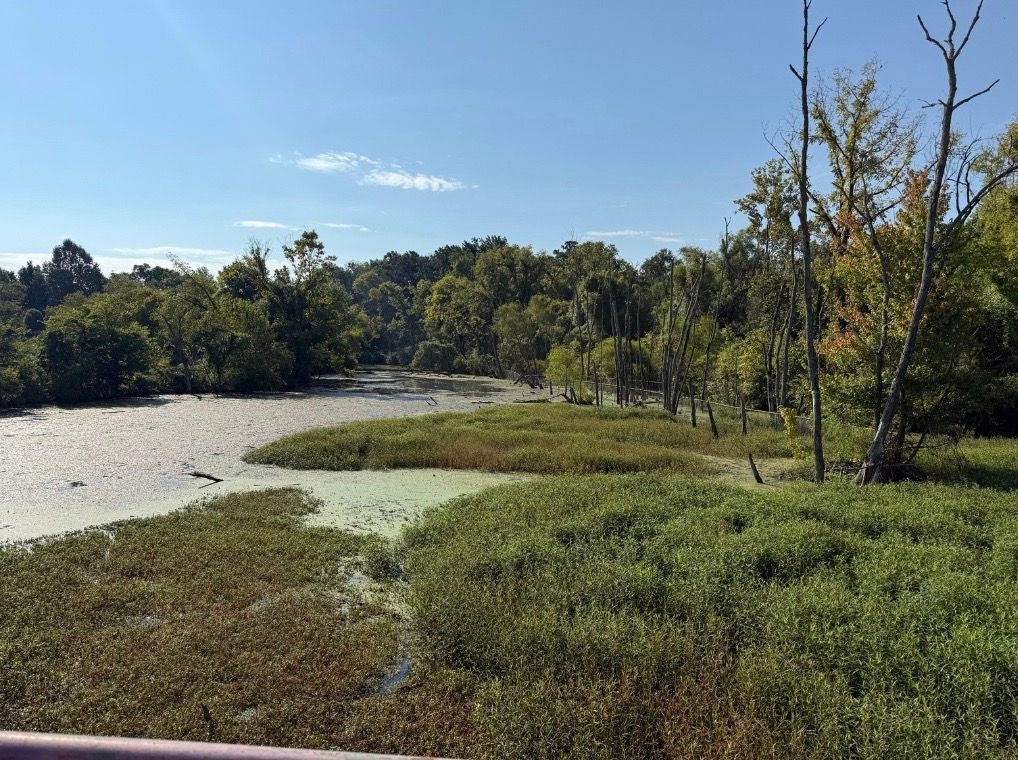Tornado Season In Tennessee

Living in Middle Tennessee, including Murfreesboro, means being part of a region known as Dixie Alley, a southeastern area with a higher-than-average frequency of tornadoes. While Tennessee isn’t in the official “Tornado Alley” of Oklahoma and Texas, Dixie Alley experiences frequent and sometimes severe storms, particularly from March through May, with peak activity in April. Tornadoes can occur at any time of year, including summer months, though they’re less common in July and August due to less atmospheric uplift. These storms are often driven by high winds, abundant moisture, and complex weather systems that can produce powerful tornadoes even in the late fall and winter. Over the years, our community has faced significant outbreaks, such as the EF-4 tornado that tore through Murfreesboro on April 10, 2009, causing notable damage and loss of life. I was working in Nashville that day and my two sons, who were very young, were in Murfreesboro. Cell phones weren't working, calls weren't going through, and it took forever to get to them because trees were down everywhere and traffic was a mess. It took me over two hours to get to them and know they were safe. I will never forget that day! Because tornadoes can happen unexpectedly and sometimes stay on the ground for miles, it’s crucial to stay informed, have a safety plan, and be prepared. Here in Murfreesboro, and across Dixie Alley, residents should prioritize early warning systems, tornado shelters, and safety drills to protect their families and homes. I want to clarify that I am a realtor, not a tornado or weather expert. However, I’ve researched extensively, lived in the Southeast my whole life, and used information from reputable sources to compile the information below.
Tennessee’s tornado activity varies significantly across its regions, West, Middle, and East, each with distinct patterns of occurrence and severity. West Tennessee, which includes Memphis and Shelby County, experiences fewer tornadoes on average, around 6 per year, but when they do occur, they can be long-tracked and sometimes quite destructive, especially in rural and suburban areas. The flat terrain of West Tennessee allows storms to travel further, sometimes causing notable damage to farmland, smaller towns, and even urban neighborhoods. Moving to the heart of the state, Middle Tennessee, home to Nashville, Murfreesboro, and surrounding counties, sees the highest tornado frequency, with an average of 9-10 tornadoes annually. This region often faces the most intense and long-lasting storms, especially during the peak spring months from March to May. Because of its higher population density, tornadoes here tend to cause more damage and pose greater risks to residents, making preparedness essential. The 2009 EF-4 tornado in Murfreesboro and the severe outbreak in 2020 highlight the potential for significant destruction. East Tennessee, with its rugged and mountainous terrain, sees far fewer tornadoes, about 3 per year, since the terrain often inhibits storm development. When tornadoes do happen here, they are generally less severe, but they can still cause damage, particularly in the valleys and lower elevations during the fall and winter. Regardless of where you live in Tennessee, understanding these regional patterns, keeping an eye on weather alerts, and having a safety plan are vital steps to stay protected during severe weather season.
Tornadoes in Tennessee and the broader Dixie Alley region pose a year-round threat, with peak activity from March to May, especially in April. While most tornadoes occur during spring, recent years have seen an increase in late-year storms, including major outbreaks in December 2021 and December 2023 that caused significant damage and loss of life. A concerning factor is that a large proportion of tornadoes in Tennessee, particularly in Dixie Alley, which is an extension of Tornado Alley, occur at night, making them deadlier due to delayed warnings and difficulty detecting storms after dark. Despite ongoing efforts to improve warning systems, challenges remain, especially in rural areas. The city of Murfreesboro does not have a good system of tornado sirens. The city does have a text alert system that seems to work pretty well though. Several local news channels and weather apps have options for users to sign up for weather related alerts as well. While tornadoes may seem unpredictable and frightening, staying informed, prepared, and vigilant is essential for protecting yourself and your loved ones. Remember, being proactive can save lives, even when the weather suddenly turns severe.
Reminder that I am a realtor, not a tornado or weather expert. My goal is to provide you with helpful, practical suggestions to better prepare you and your family in the event of a tornado warning or severe weather. Staying informed and prepared can make a difference, and I’m here to support you in making your home and community safer.
Before a Tornado:
Create a family emergency plan that includes identifying safe shelter locations, such as basements, interior rooms, or storm shelters. Consider creating an emergency kit with essentials like water, batteries, first aid supplies, and keep important documents in a fire/water proof safe. If you live in a mobile or manufactured home, ensure your foundation is secure with proper tie-downs, and consider installing a storm shelter on your property if possible. Know your local warning sources, such as NOAA weather radios, mobile alerts, and community notices, and sign up for regular alerts. Staying informed and prepared will help you react quickly when a storm approaches.
During a Tornado:
When a tornado warning is issued, seek shelter immediately. In your house, go to the basement or an interior room away from windows, doors, and exterior walls. If you have a safe room or storm shelter, go there. In multi-story apartment buildings, avoid elevators and open lobbies, as they are unsafe during a tornado. Follow building-specific emergency procedures and move to the designated shelter area if available. If you're in a manufactured or mobile home and no shelter is nearby, evacuate it well in advance, ideally before the storm arrives, or find the lowest, most sheltered area such as a ditch or culvert, then lie flat on your stomach, covering your head with your hands. Never seek shelter under bridges or overpasses, as wind speeds can be dangerously amplified there (think wind tunnel). If you're in your car, try to get to the nearest shelter or safe location. If that’s not possible, pull over safely away from trees and power lines, and lie flat in a ditch, covering your head. Outside, the safest option is to find low-lying terrain, such as a ditch or ravine, and lie down, shielding your head.
After a Tornado:
Wait for the official “all clear” before leaving your shelter. Carefully check yourself and others for injuries, and be alert for hazards like downed power lines, gas leaks, and unstable buildings. Use caution when entering damaged structures, watch for broken glass, debris, and unstable walls. Document any property damage for insurance purposes and make minor repairs, like placing a tarp over a damaged roof, to prevent further harm if you can safely do so. Remember, safety is the top priority, don’t attempt to move through hazardous areas until authorities declare it safe. Being prepared is your best defense against tornadoes. Develop a clear plan, secure your home, and stay informed about warnings. During storms, act quickly and safely, and after the storm, stay vigilant and cautious. With the right preparations and a calm mindset, you can protect your family and property no matter what Mother Nature throws your way.
Knowing the warning signs of a tornado can be the critical difference between safety and danger. While tornadoes can develop rapidly with little warning, there are certain visual and auditory cues you should be alert to when storms threaten. Recognizing these early warning signs allows you to act quickly and get to a safe location. Look for a dark, greenish sky, which often signals an intense thunderstorm capable of spawning a tornado. A loud roar, similar to a freight train, is another key indicator, as tornadoes produce a distinctive, deep rumbling sound. You should also watch for rotating clouds or wall clouds descending from a thunderstorm’s base, which are classic signs of twister formation. Swirling, flying debris near the storm is a strong warning that a tornado may be imminent or forming nearby. An eerie sudden calm after a period of strong winds or storm activity can also precede a tornado’s arrival. Additionally, large hailstones falling in a storm with little rain, or a visible funnel cloud, spinning and cone-shaped, are signs that a tornado might be on its way. While meteorologists have made significant advances in predicting tornadoes, these storms are still unpredictable and can form quickly. Most tornadoes occur between late afternoon and early evening (3-9 p.m.) and typically last less than 20 minutes on the ground. Recognizing these signs, staying alert, and having a safety plan in place are essential steps to protect yourself and your loved ones when severe weather strikes.
Tornadoes are among the most violent storms on Earth, with wind speeds that can exceed 300 miles per hour. They can destroy buildings, uproot trees, and send debris flying with deadly force, causing instant and widespread devastation. In the United States, around 1,200 tornadoes occur each year, mostly in regions known as Tornado Alley and Dixie Alley. Tornado Alley, traditionally in the Great Plains, has recently seen a shift eastward toward the Mississippi Valley, making Dixie Alley, including Tennessee, a growing hotspot for severe tornado activity. The effects on communities are profound. Tornadoes can cause extensive property damage, displace residents, and result in fatalities and injuries. Beyond immediate destruction, they also lead to significant economic impacts, damaged homes and infrastructure require costly repairs and rebuilding. This often results in increased insurance premiums for homeowners and businesses in high-risk areas, as insurers account for the higher likelihood and potential severity of storm damage. Moreover, tornadoes can strain local emergency services, healthcare facilities, and community resources, highlighting the importance of disaster preparedness.
While the storm’s physical destruction is rapid, the long-term impacts, economic, social, and emotional, can last for years, influencing community development and resilience. Understanding these impacts emphasizes the need for effective warning systems, disaster planning, and strong community support networks to mitigate the damage and protect lives.
Some of the great pictures came from the Historical Society.
Murfreesboro Real Estate
Buying and Selling in Murfreesboro
Rutherford County Real Estate
Murfreesboro Realtor
Real Estate Communication
Murfreesboro Real Estate Questions
Murfreesboro Weather
Tornadoes in Murfreesboro
Tornadoes in Tennessee
Peak Tornado Time
Moving to Murfreesboro






